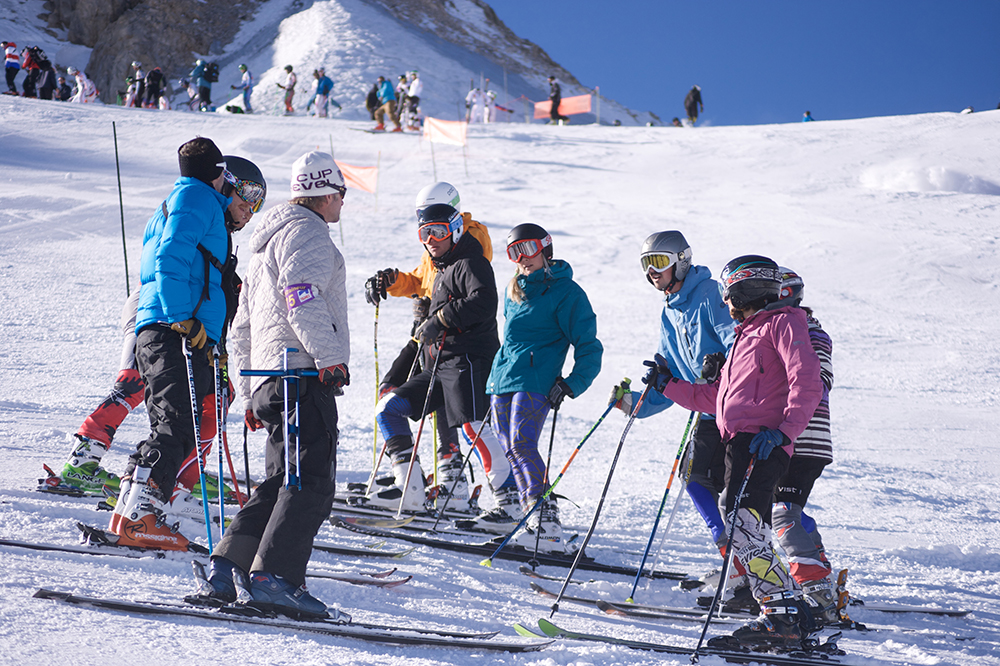This article, the third in a four-part series that is part of the conversation about development in U.S. ski racing initiated by Dan Leever and Ski Racing Media, will focus on how, based on my 35+ years of specializing in the psychology of ski racing, our sport can best leverage mental training as part of a broader reconsideration of Long-Term Athlete Development (LTAD) in U.S. ski racing. My goal is to ensure that mental training is included in the conversation aimed at helping prepare our athletes to be the “Best in the World” as part of a more comprehensive reimagining of what it takes to develop world-class ski racers in America.
The Mental Training Challenge
As I’ve noted in my previous article in this essential exploration of LTAD in our sport, athletes and coaches tend to see mental training as qualitatively different than physical conditioning and on-snow training. Mental training isn’t typically a part of the education or apprenticeship of young ski coaches. And it is less tangible and measurable. As a result, it is less clear how to train the mind. Mental training is also usually addressed reactively, when a problem arises, rather than proactively, to prevent problems from arising. The goal is to make mental training more like physical conditioning and on-snow training.
Treat Mental Training like Physical Training
Let’s start with a question: What makes physical conditioning effective? I would argue that there are six elements that answer this question:
- Comprehensive: Develops every physical contributor to ski racing performance.
- Structured: Administered to the athletes in an organized manner.
- Consistent: Used on a frequent basis by athletes.
- Developmentally appropriate: Emphasis placed on what is most relevant at different levels of development.
- Periodized: Different emphases based on the time of the year.
- Personalized: Addresses the individual needs of each athlete.
I would suggest that mental training hasn’t been approached the same way as physical in the past and this is why it has never gained traction at an individual or organizational level. To maximally leverage its evidenced-based benefits, I would further recommend that these same six criteria can be used to develop a truly impactful mental training program that helps propel U.S. ski racers from their development programs to the U.S. Ski Team and to the top of the ski racing world.
Create a Mental Training Development System
Relying on the framework I just outlined, this new vision would start with the development of a mental training performance model (MTPM; I already have such a model) that identifies the essential mental areas that would act as its foundation. From the MTPM, much like those already created for physical conditioning and ski-racing technique, a developmental progression would be created that details the why, what, when, how, and where of a comprehensive mental training program:
- Why: Based on the latest scientific evidence and expert knowledge.
- What: The key attitudes, mental “muscles,” and mental “tools” that athletes would need to train and develop to their fullest abilities.
- When: A defined progression across developmental stages and within a year.
- How: The creation of a programmatically cohesive and consistent set of methodologies, strategies, and exercises aimed at effectively and efficiently developing the mental areas described in the MTPM.
- Where: Integration and incorporation of mental training into the broader LTAD efforts of physical conditioning and on-snow training.
What would emerge from this process would be a complete mental training development system, unique to the ski racing world, that could be disseminated throughout the U.S. ski racing community and embraced at every level of our sport’s pyramid. The goals of this initiative are simple, but by no means easy. First, to educate athletes and coaches on what it takes mentally to be a world-class ski racer. This initial step would, hopefully, foster the buy-in and ownership from all stakeholders that would be essential for its widespread adoption and implementation. Second, collaboratively incorporate mental training into the progression of every level of ski racing development. Finally, to leverage this collective effort to create a culture in U.S. ski racing in which, as the saying goes, “A rising tide lifts all boats,” the result of which is fulfillment of the mission of “Best in the World.”
Want to make mental training a part of your fall prep plan? Here are a few options:
- Read my Ski Racing blogs.
- Read my latest mental training book: Train Your Mind for Athletic Success.
- Sign up for one of my online mental training courses.
- Work with me 1:1.







